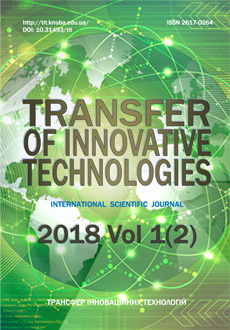Development of the mathematical model a single stage pulse hydraulic drive
DOI:
https://doi.org/10.31493/tit1812.0202Keywords:
high-speed hydraulic valve, control performance, mathematical modelingAbstract
The hydraulic drive is used in most structures of construction and road equipment. Hydrostatic volumetric drive allows the working bodies of construction machines to perceive heavy loads with a high rate of energy transfer. This gives of advantages not available on electric machines. The control of the hydraulic drive can be proportional and discrete. Proportional control is more precise control in comparison with discrete, however, more energy consuming. The discrete switching mode of the hydraulic drive can be performed using a high-speed valve, which is widely used for pilot valves because of their advantages in terms of simplicity of digital control, low power losses and insensitivity to contamination. However, to control such hydraulic valves, it is necessary to clearly understand and represent the principal features of the operation of a pulsed hydraulic system, to know the optimal values of the control system settings and transient parameters, to understand the relationships between the input control signals and the outgoing kinematic parameters. In this study, we developed a mathematical model that allows us to investigate the dynamics of high-velocity fluid flow switching valve for controlling the hydraulic power consumer. Mathematical modeling is proposed to be carried out over a typical cell of a hydraulic system consisting of a linear hydraulic cylinder, which is a consumer of hydraulic energy and a high-speed control spool valve. The actuating spool valve consists of a body inside which the valve moves, driven by a solenoid, at the input contacts of which a variable magnetic flux is generated, forming a variable magnetic force. Inside the body of the high-speed valve, the return spring of the spool is also installed, which is used to balance it. For the input of the valve control electric solenoid is energized variable frequency. By adjusting the fill factor of the control signal by pulse-width modulation, it is possible to change the magnitude of the spool force, thereby performing its programmatic movement. Thus will be regulated distributor spool slits overlap, thereby passing a continuous flow and fluid pressure through a distributor.References
Sorin Ax.A., Scheaua F.D., 2015. Introduction to Industrial Hydraulics. Introducere în hidraulica industrială. Galati, Galati University Press, ISBN 978-606-696-032-8.
Pelevin L.Je., Mishchuk D.A., Rashkivskyj V.P., Gorbatjuk Je.V., Arzhajev G.O., Krasnikov V.F., 2015. Hydraulics, Hydraulic and hydropneumatics: Textbook, KNUCA Publ., Kyiv, 340.
Florian M., Rudolf S., 2016. Development and experimental results of a small fast switching valve derived from fuel injection technology. In: Proceedings of the eighth work-shop on digital fluid power, Tampere, Finland, Vol.24-25, 9-26.
Scheaua F.D., 2018. Theoretical aspects regarding the Pressure Safety Valves Operation within a Hydraulic Circuit. Hidraulica, Iss.1, 65-70.
Scheaua F.D., 2016. Functional description of a hydr aulic throttle valve operating inside a hydraulic circuit. Hidraulica. Magazine of Hydraulics, Pneumatics, Tribology, Ecology, Sensorics, Mechatronics, No.1, 47-50.
Sukach M., 2017. Modernization of powershovel by a two sectional turning arrow. Pidvodni tehnologii, No.7, 28-33 (in Ukrainian).
Lovejkin V.S., Mishchuk D.A., 2009. Overview of the basic designs of the hydraulic drive of cranes-manipulators on vehicles. Girnychi, budivelni, dorozhni ta melioratyvni mashyny, No.74, 20-27.
Lovejkin V.S., Mishchuk D.A., 2013. Optimization of the mode of changing the departure of the manipulator with a hydraulic drive: Monograph, CP «KOMPRINT», 206 (in Ukrainian).
Mishchuk D.A., 2014. Features of the implementation of proportional hydraulic control. International Scientific and Practical Conference Modern Information and Innovative Technologies in Transport (MINTT-2014), 27-29 may, Kherson, Kherson Maritime University.
Sholc D., 2002. Proportional hydraulics. Basic course TR 701, Kyiv, DP Festo, 124.
Zhong Q., Zhang B., Yang Hua-Yong, JiEnMa, Fung Rong-Fong, 2017. Performance analysis of a high-speed on/off valve based on an intelligent pulse-width modulation control. Advances in Mechanical Engineering, Vol.9 (11),1-11. doi.org/10.1177/1687814017733247.
Pellikka M, Ahola V, Soederlund L, et al., 2011. Genetic optimization of a fast solenoid actuator for a digital hydraulic valve. Int J Fluid Power, Vol.12, 49-56.
Zhao J., Wang M., Wang Z., et al., 2017. Different boost voltage effects on the dynamic response and energy losses of high-speed solenoid valves. Appl Therm Eng, Vol.123, 1494-1503.
Goodfriend M., Sewell J., Jones C., 1990. Application of a magnetostrictive alloy, terfenol-D to direct control of hydraulic valves. SAE technical paper 901581.
Mischuk D., 2016. Hydraulic cylinder of the volumetric hydraulic drive research of the dynamic model. Girnychi, budivelni, dorozhni ta melioratyvni mashyny, No.87, 74-81 (in Ukrainian).
Wang Sh., Zhang B., Zhong Q., Yang Hu., 2017. Study on control performance of pilot high-speed switching valve. Advances in Mechanical Engineering, 9(7), 1-8.
Downloads
How to Cite
Issue
Section
License
Copyright (c) 2020 Transfer of Innovative Technologies

This work is licensed under a Creative Commons Attribution-NonCommercial-NoDerivatives 4.0 International License.
Our journal abides by the CREATIVE COMMONS copyright rights and permissions for open access journals.
Authors, who are published in this journal, agree to the following conditions:
1. The authors reserve the right to authorship of the work and pass the first publication right of this work to the journal under the terms of a Creative Commons Attribution License, which allows others to freely distribute the published research with the obligatory reference to the authors of the original work and the first publication of the work in this journal.
2. The authors have the right to conclude separate supplement agreements that relate to non-exclusive work distribution in the form in which it has been published by the journal (for example, to upload the work to the online storage of the journal or publish it as part of a monograph), provided that the reference to the first publication of the work in this journal is included.




